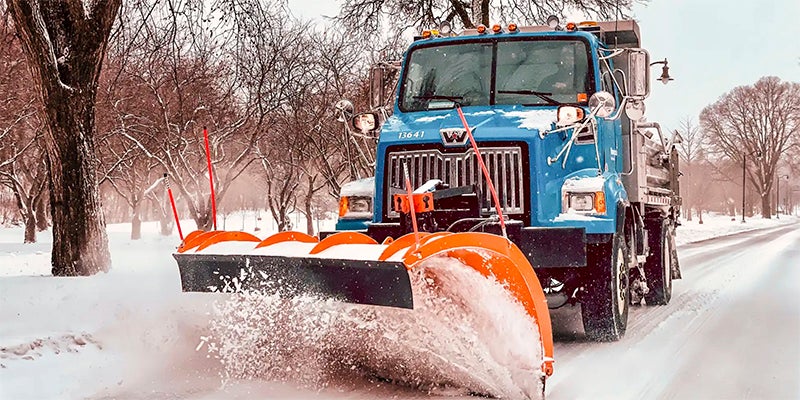Winter by the numbers: warmer weather and savings
Published 5:23 pm Friday, April 12, 2024

- Snowplow clears the Minnehaha Parkway road on March 26 in Minneapolis. Kerem Yücel/MPR News
|
Getting your Trinity Audio player ready...
|
By Anika Besst
Minnesota just experienced its warmest meteorological winter on record, beating the previous one set in 1878.
The warmer weather and lighter snowfall brought the Minnesota Department of Transportation major savings, the largest being in what it spent on salt.
MnDOT is required to purchase 80 percent of the salt it orders. However, it’s used less than 50 percent of that. The extra salt will be stored until MnDOT needs it again, allowing it to buy less next winter.
MnDOT also saw savings in employee overtime and fuel for the trucks. This money will now go to other transportation projects including filling potholes and fixing roads.
“We’re hopeful that some of the work that our crews have been able to do while they were not needed out there plowing snow this year, were able to really do some nice preventative work to just make sure that those pavements stay in just that much better condition,” said Jed Falgren, MnDOT’s state maintenance engineer.
The effects may also be seen in renters and homeowners wallets, said Joshua Solis from CenterPoint Energy.
“With the milder weather we experienced this past winter, customers likely noticed lower natural gas bills than they did in previous years,” Solis said.
In 2023-24, the Twin Cities received 29.5 inches where in 2022-23 the snow total was 90.3 inches.
These lighter snow falls were seen across the state with Duluth receiving 38.7 inches this year after 140.1 inches last year.
El Niño is one of the factors affected this winter. The climate phenomenon causes irregular weather patterns. In Minnesota, this can lead to less snow and higher temperatures in the winter.
“El Niño winters we typically see warmer and drier than normal. And that was certainly the case this winter. I wouldn’t say that we were expecting record warm. We had the warmest winter on record,” Melissa Dye from the Twin Cities National Weather Service said. “Last season was a La Niña winter, and those are typically cooler and wetter. And that was certainly the case. So we kind of had like polar opposites from last year to this year.”
Less snow meant less wear and tear on MnDOT’s snowplows.
“Our snowplows did not get beat up as much this year as they would in a normal year. [They] usually last in that range of 12 to 16 years,” Falgren said. “Over the lifetime, we’re hoping that they’ve got a couple of these light winters to match up with some of the winters that are more challenging.”
It was also a light year for private snowplowing. In St. Paul, residents often pay private plowing companies in advance for the entire winter to clear the alleys behind their homes. Jason Bever of Lawn & Snow Express Inc. Bever says this year companies like his went out less than usual.
“My family has been blowing St. Paul alleys now for 69 years,” Bever said. “We’ve been through the good years, we’ve been through the bad years, it all kind of evens out eventually. Last year was a terrible winter. This year was a good winter for me.”




